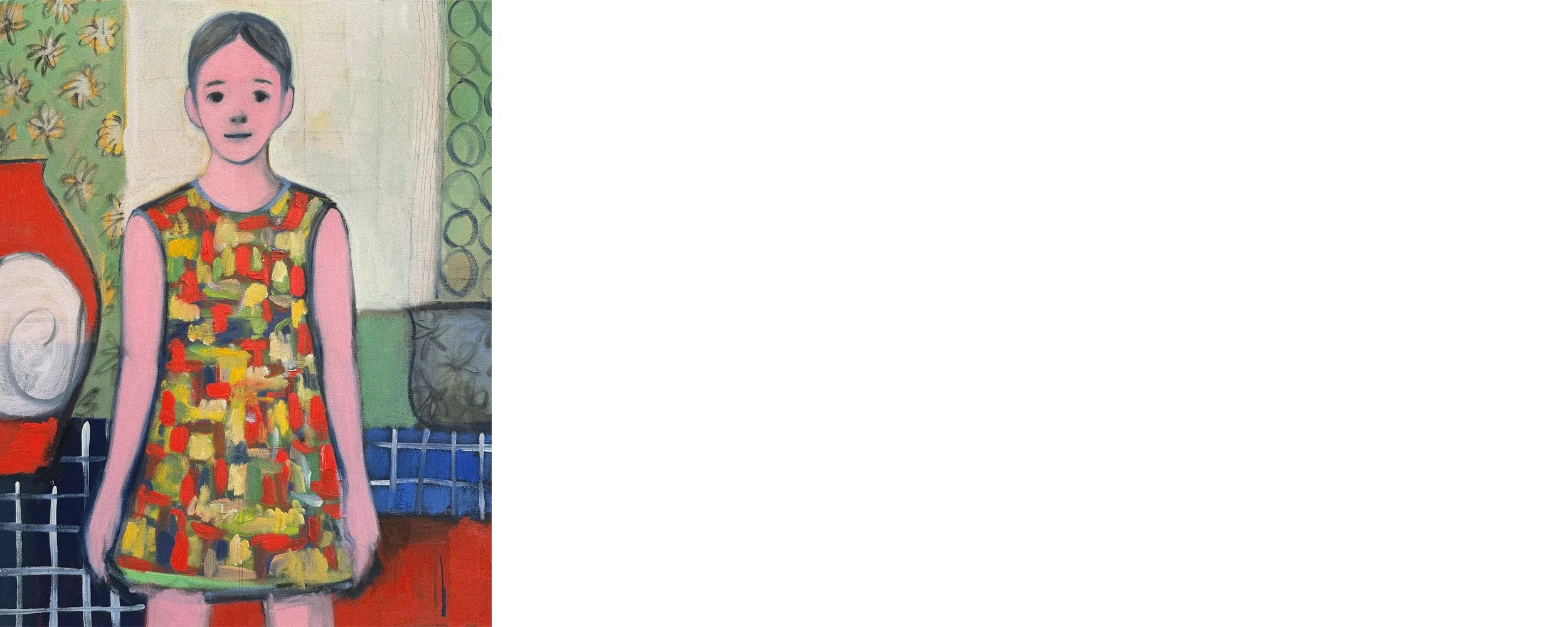I chose to observe Willem de Kooning in this studio exercise because I struggle with spontaneity in my art. I also wanted to explore action painting, using my whole body to achieve a range of motion and gestural style different than what I am used to. From the get-go I tried to allow the energy of my movements to come through my body to vary the pressure and speed of my brushstrokes and mark making on the painting surface.
I began with a primed, unsanded canvas so that I could utilize its rough texture throughout the various stages of my process. I loaded my palette with generous amounts of Cadmium Red Hue, French Ultramarine, Cadmium Yellow Hue, Alizarin Crimson, Burnt Umber and Titanium White. I used water miscible oil paints to achieve a fluidity that would be somewhat similar to the way de Kooning mixed varnish, spirits, and other vehicles into his pigments. This gave me a good range of viscosity from fast (i.e., liquid), to medium-speed and impasto paint textures. Having my palette ready ahead of time allowed one set of decisions to quickly guide and inform the next.
I started by roughing in a series of gestural lines with graphite and charcoal. I worked quickly, trying not to think about what I was putting down, but knowing it would serve as the framework for what would follow. From there, I brushed in a fluid wash of paint around and over the lines, followed by the addition of colors to overlap, cancel out, and directly mix with other colors on the canvas.
I stood back to observe these first marks and to begin assessing what was working and what was not. I continued to paint in this manner of stopping and starting, scraping out areas that weren’t working and also to achieve a Sgraffito effect. I continued drawing new lines and going over previous lines with oil pastel and charcoal. Often drawing into the wet paint resulted in no line, but rather the suggestion of line. I then let the painting sit for a few days. Because I used water miscible oils, my painting dried relatively quickly. In this second session, I scraped out areas that were feeling overworked and continued to apply more paint and draw more lines.
This was a successful exercise for me because I find it very freeing to know that I can go back into my work at any time and continue the decision-making process. There doesn’t need to be a finite moment when a painting is considered finished. I also see now how it is important to paint with the whole body to achieve a highly visceral and authentic experience.




